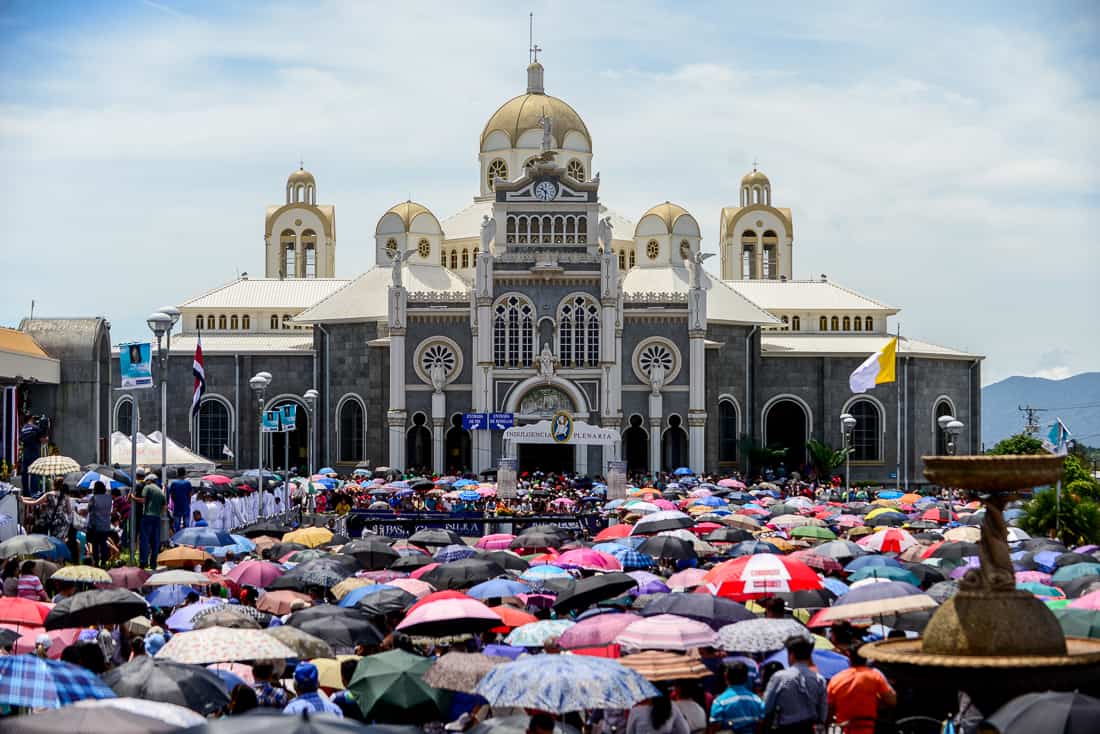
The Story Behind Costa Rica’s Romería and the Virgin of Los Ángeles
Share
Every year on August 2nd, a unique event unfolds across Costa Rica. Hundreds of thousands of people take to the roads, highways, and dirt paths, walking from every corner of the country to the city of Cartago. Their destination: the Basilica of Our Lady of the Angels (Nuestra Señora de los Ángeles), home to the small black statue affectionately called La Negrita. The event is known as La Romería — a national act of faith, effort, and identity.
While it's deeply religious for many, the Romería has also become a cultural tradition that unites Costa Ricans of all backgrounds. Some walk in silence, others sing, some pray, some walk in groups, and many simply feel the need to be part of something larger than themselves.
What is La Romería?
The word "romería" comes from the Spanish word for pilgrim (romero) and refers to a religious pilgrimage. In Costa Rica, it specifically refers to the walk made by thousands of people each year to the Basilica of Our Lady of the Angels in Cartago, about 22 kilometers east of San José.
At the heart of the pilgrimage is a small stone statue of the Virgin Mary, known as La Negrita. According to local legend, the statue was discovered in 1635 by a young girl in the outskirts of Cartago. Each time the girl tried to take the statue home, it mysteriously returned to the same spot. The event was declared a miracle, and a church was built at that location. Over time, La Negrita became the patron saint of Costa Rica, and August 2 was declared a national holiday in her honor.
Why People Walk
For many, the walk is a form of gratitude. Others do it in hope — asking for health, guidance, or protection for a loved one. Some walk in silence as a personal challenge or reflection. Others complete the pilgrimage for tradition, patriotism, or as part of their family's annual routine.
There are stories of people walking on their knees for the final stretch, or barefoot for hours. Others push wheelchairs, carry children, or support elderly family members. It’s common to see handwritten notes, rosaries, or small objects carried by pilgrims as offerings to the Virgin.
How Far People Walk
While most pilgrims begin their walk from San José — around 22 km — many come from much farther. Some start in Puntarenas, Alajuela, or Guanacaste, walking for days. Others travel from outside the country to participate. Roads are closed in many parts of the Central Valley to allow for the waves of people walking day and night leading up to August 2.
Even though the formal pilgrimage ends at the Basilica, it’s common to see people walk back home after paying their respects. It’s a physically demanding event, but for many, the physical challenge is part of the purpose.
The Role of the Basilica in Cartago
The Basilica de Nuestra Señora de los Ángeles is the spiritual center of the event. Built in a mix of Byzantine and colonial architecture, the church houses the statue of La Negrita in a special chapel below the altar.
As pilgrims arrive, many enter the Basilica on their knees as a final act of devotion. They may light candles, offer a prayer, or simply sit in silence. Others queue for hours to touch the statue or leave a note, photo, or object behind.
A mass is held on August 2, often led by the Archbishop, and attended by high-ranking officials, priests, and the public. The square outside the Basilica fills with vendors, first aid stations, and volunteers offering water and snacks. The entire event is supported by the Red Cross, police, and local emergency response teams.
Community Support and Preparation
The Costa Rican Red Cross plays a key role each year. Hundreds of volunteers set up aid stations, treat blisters, distribute water, and coordinate medical support. Police help manage traffic and crowd control. Municipalities provide lighting, cleanup, and sanitation services.
Local businesses along the route often offer free water, bathrooms, or rest stops. Schools and churches open their doors for people needing a place to sleep or rest. The event is a collective effort — and one that reflects a strong community spirit.
What to Expect if You Walk
If you’re considering joining the Romería, here are a few tips:
-
Start early or late – The heat during the day can be intense. Many start at night to walk in cooler temperatures.
-
Wear comfortable shoes – You’ll be walking on pavement for hours.
-
Bring a flashlight if walking at night, along with a reusable water bottle.
-
Be prepared for crowds – You’ll be walking with thousands of others, especially as you get closer to Cartago.
-
Pack light – A small bag with water, snacks, a rain poncho, and basic first aid is usually enough.
-
Be respectful – For many, this is a spiritual experience. Keep noise and music to a minimum near the Basilica.
How It’s Changed Over Time
While La Romería remains rooted in faith, it’s also evolved. In recent years, the event has become more inclusive, with more participation from LGBTQ groups, environmental advocates, and those using the event to raise awareness for causes like domestic violence, disability rights, or indigenous rights.
There’s also more infrastructure. In the past, the walk was less organized. Today, there are hydration points, trash collection teams, designated rest zones, and live traffic updates. The entire country tunes into the event through national broadcasts and online coverage.
La Negrita and Costa Rican Identity
What makes La Romería stand out isn’t just the scale — it’s the quiet sense of shared meaning. People from all walks of life walking side by side. Farmers, city workers, teenagers, elders, expats. It’s one of the few events where economic status doesn’t matter. For one day, walking becomes the great equalizer.
La Negrita herself is more than a religious icon. For many, she’s a symbol of Costa Rican identity — one that blends Catholicism, indigenous heritage, and a deep sense of national pride.
Final Thoughts
La Romería is more than a walk. It’s a moment of connection — to tradition, to community, and to something bigger than ourselves. For Costa Ricans, it’s one of the most meaningful dates of the year. For visitors, it’s a glimpse into the heart of the country — not through photos or museums, but through the worn soles of everyday people walking with purpose.
So, if you find yourself in Costa Rica in early August, consider walking even a small portion of the Romería. Grab a coffee from a roadside stand, tie your shoes tight, and join the crowd heading toward Cartago. You don’t need to be religious to feel something real in the footsteps around you.
